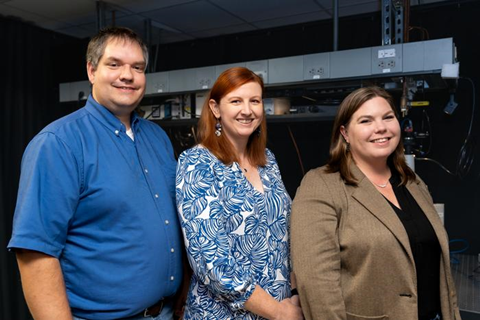In a groundbreaking study led by Sarah Worthan, Ph.D., a postdoctoral researcher in the Behringer Lab at Vanderbilt University, scientists have successfully evolved microbial cultures that possess the ability to sense pH changes, enabling rapid responses to environmental fluctuations.

Along with highlighting the power of lab-driven evolution, this discovery also led to finding similar mutations in nature in emerging pathogens and coral symbionts—organisms that navigate challenging pH shifts in their environments and are otherwise difficult to study.
READ MORE: Bacillus strains deploy regulative responses to acid stresses
READ MORE: Machine learning helps to ID microbe preferences
The new paper, “Evolution of pH-sensitive transcription termination in Escherichia coli during adaptation to repeated long-term starvation,” was published in the Proceedings of the National Academy of Science on 9/19/24. The driving result from this work is the discovery of a mutation in the independently evolved populations of bacteria that occurs when the bacteria are exposed to feast and famine cycles.
According to the paper, this mutation, where an arginine amino acid is replaced with a histidine, occurred on the Rho protein, which is involved in terminating RNA transcription. Arginine to histidine mutations have also been observed in cancers and have been shown to confer an adaptive pH sensing ability to oncogenic proteins. In bacteria, these arginine to histidine mutations can sense pH and alter the activity of the Rho protein to rapidly impact how genes are expressed.
Evolved in the lab
Co-author Benjamin Bratton, Ph.D., an assistant professor of Pathology, Microbiology and Immunology at the VU Medical Center, led imaging for the lab experiments and analysis of the pH assays while co-author Marc Boudvillain, Ph.D., CNRS Research Director at the Centre de Biophysique Moléculaire in Orléans, France and a chemist by training, led biochemical experiments demonstrating Rho’s altered activity across pH environments.
According to Megan Behringer, Ph.D., assistant professor of Biological Sciences and the principal investigator of the study, “This mutation in rho repeatedly arose in our laboratory evolution cultures. We screened a lot of phenotypes and struggled to identify the Rho mutation’s specific effects. We then reached out to Marc, and he asked if we had considered that the effects might vary with pH. That’s when we returned to our genomic data and noticed that every mutation in rho co-occurred with a mutation in a gene named “ydcI”.
Not much is known about this gene, but very recent studies suggested that it may have a role in pH homeostasis. Marc offered to screen our Rho protein in vitro for pH and when he and [co-author] Mildred came back with the results, we began to piece the whole story together.”
Single bacterial cell physiology
“Dr. Behringer reached out to me a few weeks after my lab opened at Vanderbilt with this interesting observation about solution pH, but wondered if there was a way we could measure pH inside individual cells,” Bratton observed. “Measuring single bacterial cell physiology happens to be one of the major skills of the Bratton lab, so this collaboration has been great. Even though bacteria interact with each other through their extracellular environment, individual cells have some control over their intracellular environments.”
Boudvillain added, “we were happy to contribute the biochemistry experiments showing that the Arg-to-His mutation indeed regulates Rho activity in a pH-dependent manner in vitro.”
After the lab experiments, the team then went to search for these mutations in natural systems.
According to Behringer, “we found it in this neglected pathogen, Bartonella baciliformis, which causes Carrion’s Disease in the Andean valleys of South America. This species of bacteria was already known to pH sense as it must rapidly adjust from the high pH insect gut to the neutral pH of human blood when it’s transmitted by its sand fly vector.”
Marine sponges
These results also have implications in the world of marine sponges. According to the paper, the pH of the ocean forms gradients in particular areas, like inside hydrothermal vents or the inside of sponge bodies. Micro-organisms that live in and around these areas need to be able to quickly adapt to both environments. Their evolved gene expression allows this transition; however, climate change could alter these dynamics is serious ways.
“If the ocean pH begins to look more like the sponge pH, this can endanger the bacteria and their symbionts,” Behringer said. “The bacteria may lose the environmental cue that induces the correct behavior for their current environment.”
Boudvillain said that this collaboration started as something of a happy accident. Behringer first reached out to Boudvillain to see a supplemental figure that had disappeared from a website. Upon connecting, the two realized their research trajectories aligned well.
“I was very happy to participate with this interdisciplinary work. I have learned a lot from Ben, Sarah and Megan,” he said. “It has been a great pleasure and opportunity to work with these young and dynamic colleagues.”
Exceptional collaboration
Worthan expressed gratitude for a great team: “Being part of this exceptional collaborative effort has been incredibly rewarding. Watching this story come together has been the highlight of my postdoctoral experience, and I am thankful to have contributed to such an exciting project.”
Bratton added: “One of Vanderbilt’s core values is radical collaboration, and I think this partnership of different labs bringing their own expertise to the table to understand something more complex and beautiful than any of the labs could have done on their own shows how important radical collaboration is for understanding the (microbial) world as a whole.”
This publication is the culmination of two years of study funded in part by a pilot grant from the original ESI call for applications to Behringer and Bratton. This cross-disciplinary, international collaboration is exactly the type of project that drives Evolutionary Studies at Vanderbilt to new heights.







No comments yet